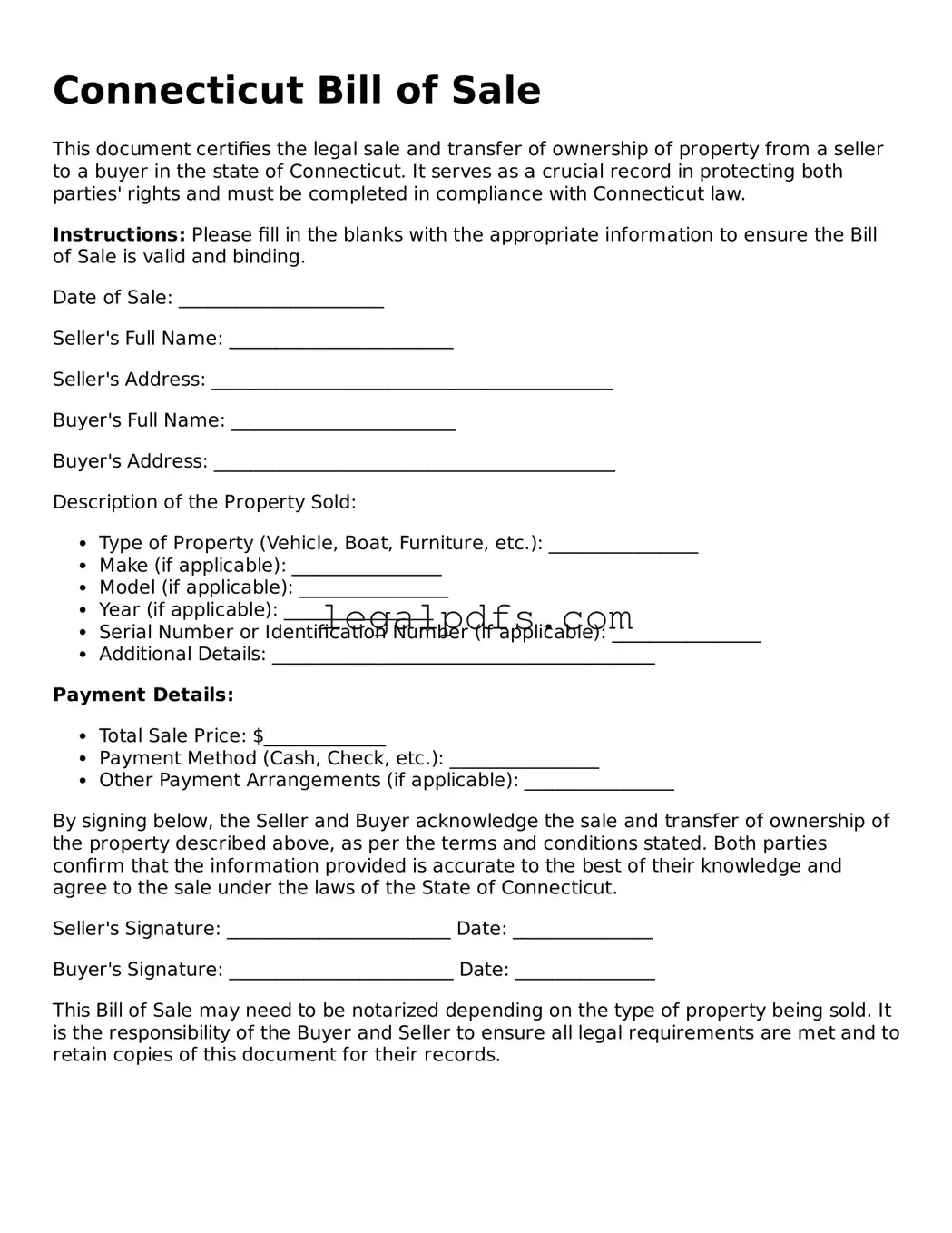What is a Connecticut Bill of Sale?
A Connecticut Bill of Sale is a legal document that records the sale and transfer of ownership of a personal property from a seller to a buyer in the state of Connecticut. It details the transaction and confirms the buyer's ownership of the property.
Do I need a Connecticut Bill of Sale to register a vehicle?
Yes, when registering a vehicle in Connecticut, a Bill of Sale is typically required among other documents. It serves as proof of purchase and verifies the sale's details, including the price and date.
What information should be included in a Connecticut Bill of Sale?
A Connecticut Bill of Sale should include the date of the sale, the names and addresses of the seller and the buyer, a detailed description of the item being sold (including make, model, year, and serial number if applicable), the sale price, and the signatures of both parties.
Is a Bill of Sale enough to prove ownership of a vehicle in Connecticut?
No, a Bill of Sale alone is not enough to prove ownership of a vehicle in Connecticut. The vehicle’s title must be transferred to the new owner to prove ownership legally. The Bill of Sale is a necessary document for the title transfer process.
Can a Connecticut Bill of Sale be handwritten?
Yes, a Connecticut Bill of Sale can be handwritten as long as it contains all the required information and is legible. Both parties should have a copy of the document for their records.
Does a Connecticut Bill of Sale need to be notarized?
While not typically required for private sales, having a Connecticut Bill of Sale notarized can add an extra layer of security and legal protection for both the buyer and the seller. It verifies the authenticity of the signatures on the document.
Can I use a generic Bill of Sale form for a transaction in Connecticut?
Yes, a generic Bill of Sale form can be used in Connecticut as long as it includes all the necessary information as specified by Connecticut law. However, it's advisable to use a form that is specifically designed for Connecticut to ensure compliance with state specifics.
What happens if I lose my Connecticut Bill of Sale?
If you lose your Connecticut Bill of Sale, it’s recommended to contact the other party involved in the transaction to obtain a copy. Keeping digital copies can prevent such situations. If recreating the document, both parties should sign it again to maintain its legality.
